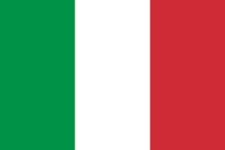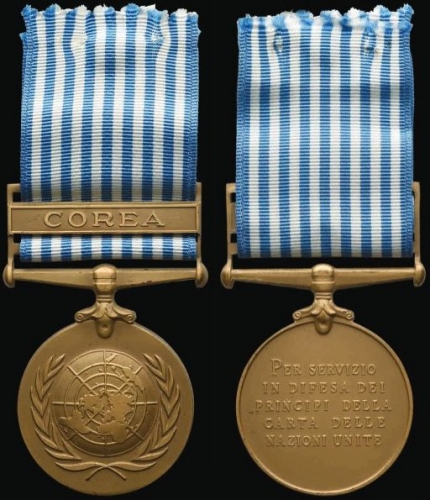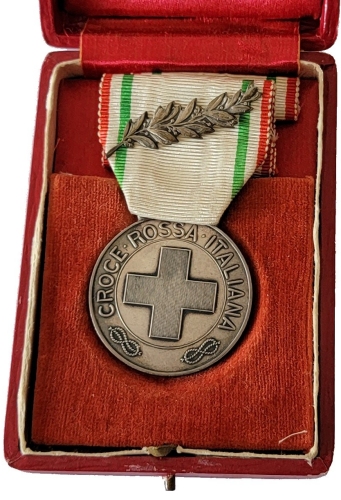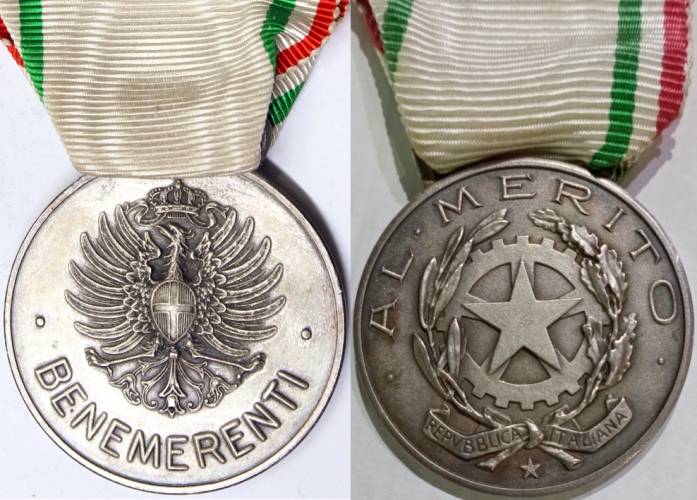
The Italian, Marco Polo, was the first Westerner to annotate the existence of Korea, then known as Koryo, but the majority of information on early Korea comes from the Jesuits who worked with Japan during their invasion of Korea (1592-1598) under Toyotomi Hideyoshi. The Italians and Koreans concluded a treaty on June 26, 1884. Their relations were interrupted as a result of the Japan-Korea Treaty of 1905 (also known as the Eulsa Treaty or Japan-Korea Protectorate Treaty), which cancelled the diplomatic power of Korea and forced the evacuation of foreign legations. However, Korea and Italy feel that they have maintained diplomatic relations ever since 1884, making Italy one of Korea’s oldest diplomatic partners. Formal relations with Italy were formally restored on November 24, 1956. An Italian legation was established in Korea in December 1957 and was elevated to an Embassy in 1959.
Much like Japan and Germany, the aftermath of World War II left Italy with a destroyed economy, a divided society, and anger against the monarchy for its endorsement of the Fascist regime for the previous twenty years. A referendum on whether to remain a monarchy or become a republic was held on June 2, 1946. The republican side won 54% of the vote, and Italy officially became a republic. When the Korean War began, Italy was a member of the North Atlantic Treaty Organization (NATO) but until 1955, it was not a member of the United Nations. Article 11 of the 1948 Italian Constitution declares: “Italy rejects war as an instrument of aggression against the freedom of other peoples and as a means for the settlement of international disputes. Italy agrees, on conditions of equality with other States, to the limitations of sovereignty that may be necessary to a world order ensuring peace and justice among the Nations. Italy promotes and encourages international organizations furthering such ends”. When the Korea War started, the dispatch of combat troops could not be considered due to complex domestic circumstances. In August 1950, when the Red Cross put out a request for help, Italy responded under Article 11, despite political and economic difficulties. It dispatched the Italian Red Cross Hospital #68 (L’OSPEDALE Croce Rossa Italiana N°68) to South Korea. Italy set a record as the only non-UN member country among the participating countries in the Korean War. It was also the last country to send its citizens to the war. The Italian Red Cross supported the hospital with personnel from the Military Corps (Corpo Militare della Croce Rossa Italiana) and the Volunteer Nurses Corps (Corpo delle Infermiere Volontarie della Croce Rossa Italiana). The hospital team was composed of seven doctors, six nurses, a Chaplain, 2 administrators, 1 pharmacist, 6 non-commissioned officers, and 44 enlisted personnel. The hospital staff left Napoli, Italy on October 16, 1951, arrived in Pusan on November 16, and opened the hospital on December 6th at the vacant Wooshin Elementary School building in Yongdongpo, Seoul.1 The 50-bed hospital provided medical care in: pediatrics, general medicine, surgery, ophthalmology, and dental. The main mission of the hospital was to treat evacuated soldiers, but when the number of evacuated soldiers decreased, it also treated Korean civilians.
One year after the hospital was established, it burned to the ground on November 30, 1952, by a suspected communist arsonist. No one was lost in the fire and by February 23, 1953, the hospital had been rebuilt and expanded to 145 beds. It was capable of being expanded to 200 beds during an emergency. From June 1952 to July 1953, the hospital treated 1,639 in-patients, performed over 3,297 surgeries, and treated over 74,000 out-patients. Most of the patients were Korean civilians, averaging about 300 per day. No questions were asked about the person’s background, whether they were from the North or South. The mortality rate was 4%. On January 2, 1955, the Italian Red Cross ceased operating in Korea and donated all of their hospital equipment to the South Korean government. The hospital was closed on Jan. 17, 1955.
On Sept. 17, 1952, there was a train crash accident near Kurodong, Seoul, in which 12 people were killed. The Italian Red Cross Hospital dispatched an emergency task force, which provided medical treatment for 161 injured individuals. On October 6th, President Rhee visited the Hospital to show his appreciation for Italy rendering their assistance in the train accident, and to award a Presidential Unit Citation. A second Korean Presidential Unit Citation was issued to the hospital on Dec. 20, 1954
I found one reference which stated that the Korean government awarded the “Gold Star Order of Military Merit and the Silver Medal in August 1954 to the unit’s head and the head nurse”. I am not sure what was awarded.
On June 2, 1989, Graiella Simbolotti, the Italian ambassador to South Korea, installed a memorial plaque at the Wooshin School. To honor the Red Cross spirit of the five countries: Denmark, India, Italy, Norway, and Sweden, who dispatched medical support units during the Korean War, the South Korean government erected the “Memorial to the participation of the Medical Volunteer Corps” 의료지원단참전기념비 (医療支援団參戦記念碑 / 医疗志愿团參战纪念碑) in Pusan. The Korean War Memorial in Italy is a plaque located inside the Red Cross headquarters in Rome, where a ceremony was held in 1951 before sending men and women to service in Korea.

Sold at auction by Morton and Eden, Auction #120, Dec 7, 2022, Lot #866 for £5,000 plus buyer’s commission and shipping.

Established on November 13, 1913, the medal is awarded in both peacetime and wartime and in Gold, Silver, and Bronze. When the Medal is awarded for wartime service, a laurel branch / palm clasp is attached to the drape. A star centered on the branch indicates a Merit Award, however I have seen the star attached to the ribbon bar, and the star attached to the drape above the laurel device. Attachments are composed of the same metal as the planchet.

With the onset of the Covid-19 pandemic, the Korean government began sending masks to the Italian veterans of the Korean War and their families.
